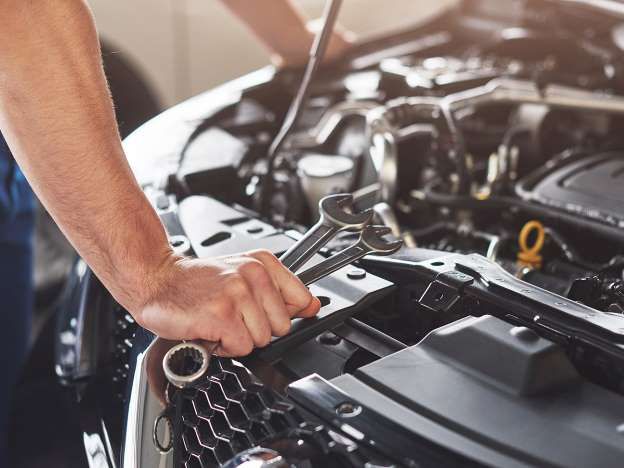- Oxygen Sensor: The Air-Fuel Alchemist
The Oxygen Sensor works like a wizard monitoring the oxygen levels in your exhaust gases. Its main job is to make sure the air-fuel mixture is perfectly balanced for efficient combustion. When the oxygen sensor malfunctions, it can cause the engine to either burn too much fuel (running rich) or not enough (running lean). Both conditions reduce fuel efficiency and hurt engine performance, often leading to increased emissions and poor fuel economy.
A picture could show the oxygen sensor installed in the exhaust pipe with an arrow indicating how it monitors gases. - Mass Airflow Sensor (MAF): The Air Accountant
The Mass Airflow Sensor (MAF) acts as an accountant for the engine, precisely measuring how much air is entering the system. This sensor provides crucial data for the engine control unit (ECU) to calculate the correct air-fuel ratio. When the MAF sensor malfunctions, the wrong amount of fuel is mixed with the air, leading to incomplete combustion. This wasteful process diminishes fuel efficiency, making you visit the gas station more often.
An ideal picture could show the MAF sensor inside the air intake system, with airflow direction clearly indicated. - Throttle Position Sensor (TPS): The Power Regulator
The Throttle Position Sensor (TPS) keeps track of the throttle’s position to tell the engine how much power you need. It communicates the position of the throttle (gas pedal) to the engine control system to adjust the air-fuel mixture accordingly. A faulty TPS can send the wrong signal, making the engine either rev too high or too low, both of which burn more fuel than necessary and can lead to inefficient operation.
A picture might display the TPS connected to the throttle body, showing how it monitors the position of the gas pedal. - Fuel Pressure Sensor: The Fuel Distributor
The Fuel Pressure Sensor monitors the fuel pressure in the fuel system, ensuring that the right amount of fuel is sent to the engine. If the fuel pressure is too high or too low, it can mess up the air-fuel mixture. This could result in wasted fuel or cause the engine to run inefficiently, both of which reduce fuel efficiency and might even damage the engine.
A potential picture could show the fuel pressure sensor connected to the fuel rail, highlighting its role in monitoring the fuel system. - Temperature Sensor: The Cool Operator
The Engine Temperature Sensor keeps tabs on the engine’s coolant temperature, ensuring the engine runs at optimal heat levels. If this sensor malfunctions, it could either cause the engine to overheat or stay too cool, disrupting the combustion process. Inaccurate readings can lead to poor fuel economy, as the engine might overcompensate by using more fuel than necessary to maintain its ideal operating temperature.
A good picture might depict the temperature sensor embedded in the engine block with a diagram of the coolant system.
These sensors are vital components of modern vehicles. Each one plays a critical role in maintaining the right balance of air, fuel, and power to ensure your engine runs smoothly and efficiently. Keeping them in good working order is essential for achieving optimal fuel efficiency and avoiding unnecessary fuel consumption.
ChatGPT can make mistakes. Check important info.
